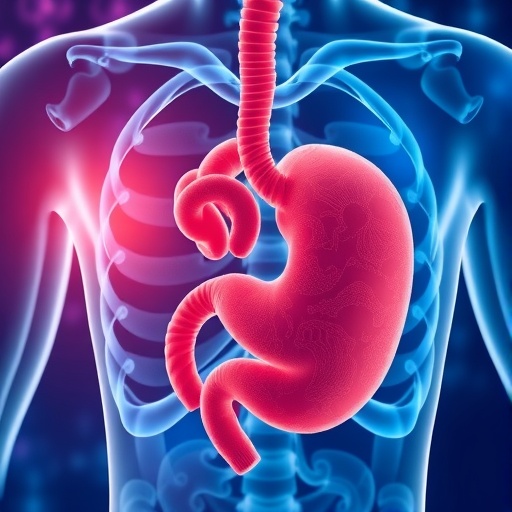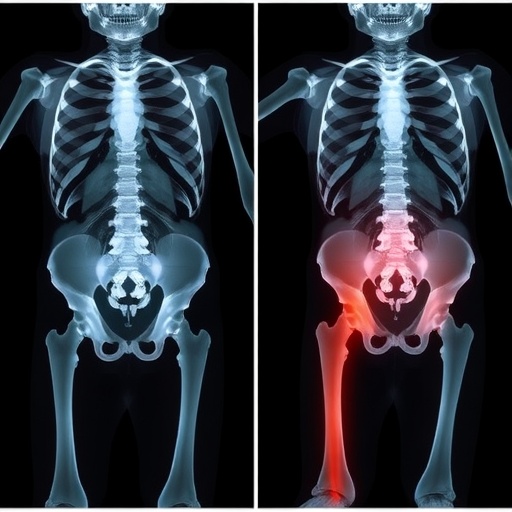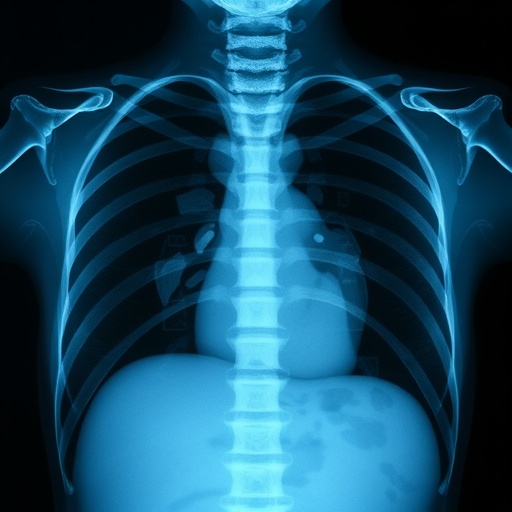
In a groundbreaking phase I/II clinical trial, researchers have embarked on a pioneering investigation into the safety and efficacy of increased doses of the oral chemotherapeutic agent S-1 in combination with oxaliplatin and the immune checkpoint inhibitor nivolumab. This innovative study targets patients suffering from HER2-negative advanced gastric or gastroesophageal junction cancers, a demographic often confronted with limited therapeutic options and poor prognoses. Through meticulous dosage refinement grounded in patient-specific physiological factors, this trial represents a promising stride toward personalized oncology.
Central to this study is the use of a novel dosage calculation known as the BBT formula, which transcends the traditional dosing approach based solely on body surface area (BSA). Developed through rigorous pharmacokinetic analyses, the BBT formula incorporates renal function, sex, and BSA to more accurately predict the pharmacodynamics of 5-fluorouracil, the active metabolite of S-1. This nuanced methodology aims to optimize drug exposure, thereby enhancing treatment efficacy while maintaining manageable toxicity levels.
Previous phase III trials underscored a critical insight: patients whose S-1 doses were assigned purely based on BSA, without adjusting for renal function and sex differences, showed trends of diminished overall survival and progression-free survival. Recognizing this, the research team designed the current trial to test whether applying the BBT formula for dose escalation could improve clinical outcomes without exacerbating adverse effects.
Eligible participants include chemo-naïve individuals diagnosed with HER2-negative advanced gastric or gastroesophageal junction cancers whose conventional S-1 dose is calculated to be less than what the BBT formula recommends. These patients receive an escalated dose of S-1, alongside oxaliplatin administered at 130 mg/m² and a fixed dose of nivolumab at 360 mg per body. This tri-modality therapy leverages the cytotoxicity of chemotherapy with immunotherapeutic mechanisms to potentially achieve synergistic anti-tumor responses.
The primary endpoints focus on assessing the safety profile of the increased S-1 dosage. Specifically, dose-limiting toxicities (DLTs) are meticulously monitored in an initial cohort of six patients to ascertain acute tolerability. Subsequently, in a larger group of twenty patients, the proportion necessitating dose reductions provides a critical measure of sustainable dosing feasibility. The study is statistically powered to accept an incidence of dose reduction at around 30%, while firmly rejecting rates surpassing 50%, under stringent alpha and beta parameters.
Secondary endpoints extend to a comprehensive evaluation of adverse event frequencies, relative dose intensities, and crucial efficacy metrics such as response rate, disease control rate, progression-free survival (PFS), and overall survival (OS). Importantly, the trial incorporates an immunological correlation study aiming to decipher immune profiles associated with therapeutic responses. This component may unveil biomarkers predictive of clinical benefit or toxicity, further advancing personalized treatment paradigms.
The inclusion of nivolumab, a programmed death-1 (PD-1) immune checkpoint inhibitor, represents a strategic advancement in combining chemotherapy with immunotherapy. By obstructing PD-1 mediated immune evasion, nivolumab may potentiate anti-tumor immune responses, while chemotherapy-induced immunogenic cell death may further sensitize tumors to immune attack. Evaluating this combination in the context of modified S-1 dosing offers valuable insights into optimizing multimodal regimens for gastric cancer.
This trial, spearheaded by the University of Tokyo and supported by 19 participating institutions across Japan, embodies a concerted effort to refine therapeutic strategies for a notoriously aggressive malignancy. Its design underscores a robust inclusion of pharmacokinetic principles to inform dose escalation, thereby defying the conventional one-size-fits-all approach that has long dominated oncology practice.
Safety assessments are paramount in this study due to the inherent risks of intensifying chemotherapy dosages. The investigators are rigorously tracking hematologic toxicities, gastrointestinal symptoms, neuropathies, and immune-related adverse events attributable to nivolumab. Early detection and management of these effects are critical to preserving patient quality of life and maintaining compliance with the therapeutic regimen.
Furthermore, the trial leverages cutting-edge biomarker analyses to investigate the interplay between immune microenvironmental factors and treatment outcomes. Such translational research implications bear the promise of unveiling novel predictive indicators and potential targets for future therapeutic innovations in gastroesophageal cancers.
The enrollment criteria meticulously exclude patients with prior systemic therapy to eliminate confounding factors affecting drug metabolism and tumor biology. This consideration enables a clearer interpretation of how the BBT formula-driven dose escalation impacts treatment dynamics and patient survival outcomes.
Initiated in June 2023, the study is contemporaneously registered on the Japan Registry of Clinical Trials (jRCTs031230127), underscoring commitment to transparency and adherence to rigorous clinical governance. The collaboration across multiple institutions enhances the generalizability of findings and fosters a multicenter framework for rapid knowledge dissemination.
Initial pharmacokinetic foundations for the BBT formula emerged from two prospective studies that quantified 5-fluorouracil exposure, thereby calibrating S-1 dosing to achieve optimal therapeutic indices. This empirical approach marries quantitative pharmacology with clinical oncology, representing a paradigm shift toward individualized chemotherapy dosing.
Given the heterogeneity in gastric cancer biology and patient physiology, this study exemplifies a precision medicine approach, aiming to tailor treatment intensity based on a multidimensional assessment rather than conventional metrics alone. Such innovations could herald landmark improvements in survival and quality of life for patients contending with this challenging disease.
The combination of S-1, oxaliplatin, and nivolumab under this refined dosing protocol could establish a new standard of care, pending positive safety and efficacy outcomes. Additionally, the exploration of immune correlates may unlock new therapeutic avenues and synergistic combinations with emerging immunomodulators.
In summary, this phase I/II trial represents a vital juncture in advanced gastric cancer therapeutics, merging sophisticated pharmacokinetic modeling with frontline chemoimmunotherapy. The results have the potential to reshape dosing paradigms, enhance treatment personalization, and ultimately improve clinical outcomes for a patient population with significant unmet medical needs.
Subject of Research: Safety and efficacy evaluation of increased-dose S-1 chemotherapy combined with oxaliplatin and nivolumab in HER2-negative advanced gastric and gastroesophageal junction cancer.
Article Title: A phase I/II trial evaluating the safety of increased-dose S- 1 with oxaliplatin and nivolumab in HER2-negative advanced gastric cancer.
Article References:
Baba, K., Suzuki, N., Imamura, C.K. et al. A phase I/II trial evaluating the safety of increased-dose S- 1 with oxaliplatin and nivolumab in HER2-negative advanced gastric cancer. BMC Cancer 25, 675 (2025). https://doi.org/10.1186/s12885-025-14084-1
Image Credits: Scienmag.com
DOI: https://doi.org/10.1186/s12885-025-14084-1
Tags: advanced gastroesophageal junction cancerBBT formula dosinggastric cancer clinical trialHER2-negative gastric cancerhigh-dose S-1 chemotherapyimmune checkpoint inhibitors in oncologyimproving patient survival ratesoptimizing drug exposure in oncologyoxaliplatin combination therapypersonalized cancer treatment strategiespharmacokinetics in cancer treatmentrenal function and chemotherapy





